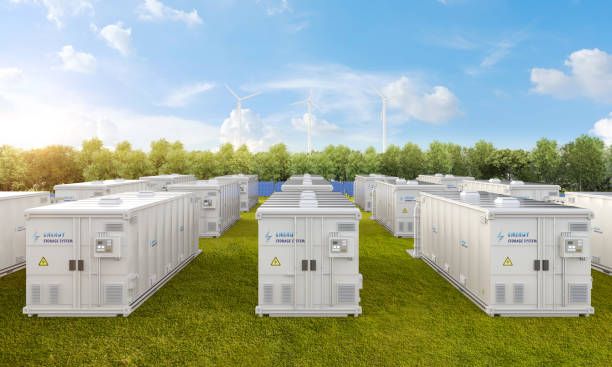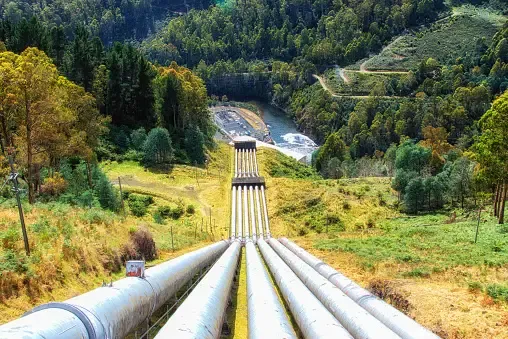
Get a Quote
Different Types of Energy Storage Systems: A Comprehensive Guide
In today’s world, energy storage systems (ESS) play a crucial role in the reliable supply of energy, especially with the rise of renewable energy sources like solar and wind. These systems are essential for balancing supply and demand, improving grid stability, and ensuring energy is available when needed. Understanding the different types of energy storage systems helps businesses and individuals make informed decisions about which technology best suits their energy needs.
This guide covers the main types of energy storage systems, their benefits, limitations, and where they are commonly used. We'll also include visual aids and provide numerical data to make comparisons clearer.
Why Energy Storage Systems Are Important
Energy storage systems are vital for several reasons:
- Grid Stability: They help balance supply and demand, preventing power outages.
- Renewable Energy Integration: ESS enable the storage of energy from renewable sources, allowing energy use even when the sun isn't shining or the wind isn't blowing.
- Energy Efficiency: Storing excess energy during low-demand periods can reduce reliance on non-renewable sources during peak times.
4 Different Types of Energy Storage Systems
Energy storage systems can be classified into four broad categories based on the mechanism they use to store energy: mechanical, electrochemical, electrical, and thermal. Let's explore each in detail.
1. Mechanical Energy Storage Systems
Mechanical energy storage systems store energy through physical means, often by converting electrical energy into potential or kinetic energy.
Pumped Hydro Storage
- How It Works: Pumped hydroelectric storage is the most widely used form of large-scale energy storage. Water is pumped to an elevated reservoir during periods of low demand, and released through turbines to generate electricity during peak demand.
- Capacity and Usage: Pumped hydro systems typically have capacities in the range of 100 MW to several GW and are used for long-duration energy storage, often over 6 to 12 hours.
- Advantages:
- High efficiency (around 70%-85%).
- Large-scale energy storage potential.
- Limitations:
- Requires specific geographical locations with access to water and height differences.
Flywheel Energy Storage
- How It Works: Flywheel systems store energy as rotational kinetic energy. An electric motor accelerates a flywheel to a high speed, storing the energy. When needed, the motor acts as a generator, slowing the flywheel and converting its kinetic energy back into electrical energy.
- Capacity and Usage: Flywheels are generally used for short-term energy storage with a capacity range of 100 kW to 10 MW.
- Advantages:
- Fast response time.
- Long lifecycle (up to 20 years).
- Limitations:
- Low energy density, making them unsuitable for long-term storage.
2. Electrochemical Energy Storage Systems
Electrochemical energy storage systems store energy in chemical compounds and release it through chemical reactions.
Lithium-Ion Energy Storage Systems
- How They Work: Lithium-ion energy storage systems are the most popular form of battery storage. Energy is stored in the form of lithium ions moving between the anode and cathode.
- Capacity and Usage: Lithium-ion batteries are available for both small-scale (household) and large-scale applications (up to 100 MW). They are commonly used in electric vehicles, renewable energy systems, and grid storage.
- Advantages:
- High energy density (up to 265 Wh/kg).
- Long cycle life (up to 4,000 cycles).
- Limitations:
- Expensive compared to other battery types.
- Degradation over time due to charge-discharge cycles.
Lead-Acid Batteries
- How They Work: Lead-acid batteries store energy through a reversible chemical reaction between lead dioxide (positive plate), sponge lead (negative plate), and sulfuric acid (electrolyte).
- Capacity and Usage: Common in automotive, backup power, and renewable energy applications. Capacity ranges up to 10 MWh for large-scale storage.
- Advantages:
- Low cost and reliable for short-term storage.
- Mature technology with easy recycling.
- Limitations:
- Low energy density (around 30-50 Wh/kg).
- Shorter cycle life compared to lithium-ion.
Flow Batteries
- How They Work: Flow batteries store energy in liquid electrolytes that flow through an electrochemical cell. The most common types are vanadium redox flow batteries.
- Capacity and Usage: Used in large-scale, long-duration storage with capacities ranging from 100 kW to several MW.
- Advantages:
- Long cycle life (up to 10,000 cycles).
- Scalability for large-scale applications.
- Limitations:
- Low energy density.
- High upfront costs due to complex infrastructure.
3. Electrical Energy Storage Systems
Electrical energy storage systems directly store electrical energy without conversion to other forms.
Supercapacitors
- How They Work: Supercapacitors store energy in an electric field created between two conducting plates separated by a dielectric material. They can rapidly charge and discharge energy.
- Capacity and Usage: Best suited for short-duration, high-power applications. Capacity ranges from 1 kW to 10 MW.
- Advantages:
- Extremely fast charging and discharging.
- Long cycle life (up to 1 million cycles).
- Limitations:
- Low energy density compared to batteries (about 5-10 Wh/kg).
- Suitable only for short-term storage.
4. Thermal Energy Storage Systems
Thermal energy storage systems store energy by heating or cooling a material.
Sensible Heat Storage
- How It Works: Sensible heat storage stores thermal energy by increasing the temperature of a material like water, molten salt, or rocks. The stored heat is released when needed to generate electricity or provide heating.
- Capacity and Usage: Widely used in concentrated solar power plants with capacities ranging from 50 MW to several hundred MW.
- Advantages:
- Low cost and high reliability.
- Suitable for large-scale energy storage.
- Limitations:
- Low energy density.
- Large space requirements.
Latent Heat Storage
- How It Works: Latent heat storage stores energy by melting or solidifying a material (phase change). Materials like paraffin wax or salt hydrates are commonly used.
- Capacity and Usage: Used in industrial applications and for temperature regulation in buildings. Capacity ranges from kWh to MWh.
- Advantages:
- High energy density compared to sensible heat storage.
- Ability to store and release heat at constant temperatures.
- Limitations:
- High cost of phase-change materials.
Comparison of Different Types of Energy Storage Systems
| Storage System | Energy Density | Efficiency | Cost | Best Use Case |
|---|---|---|---|---|
| Lithium-Ion Batteries | 150-265 Wh/kg | 85%-95% | High | EVs, grid storage, renewable |
| Lead-Acid Batteries | 30-50 Wh/kg | 70%-80% | Low | Backup power, short-term use |
| Pumped Hydro | Low (due to space) | 70%-85% | Medium | Large-scale, long-duration |
| Flow Batteries | 20-40 Wh/kg | 60%-85% | High | Large-scale, long-duration |
| Flywheels | Low | 85%-95% | Medium | Short-term, high power |
| Thermal (Sensible) | Depends on material | 50%-90% | Low | Large-scale, solar power plants |
Read more: Top 15 Home Energy Storage System Manufacturers
Conclusion: Which Energy Storage System is Best?
The best energy storage system depends on the application. For short-term, high-power applications, supercapacitors or flywheels are ideal. Lithium-ion batteries are the best for most small to mid-sized energy storage needs due to their energy density and efficiency, while pumped hydro and thermal storage work well for large-scale, long-duration applications.
Choosing the right energy storage system involves considering factors like cost, energy density, and cycle life. By understanding the different types of energy storage systems, you can select the one that fits your energy needs and helps optimize energy efficiency.
FAQs
1. What is the most efficient energy storage system?
- Lithium-ion batteries and flywheels offer the highest efficiency, reaching up to 95%.
2. What is the best energy storage system for solar power?
- Lithium-ion batteries are commonly used for solar energy storage due to their high energy density and efficiency.
3. How long do energy storage systems last?
- The lifespan of storage systems varies. Lithium-ion batteries last up to 10 years, while flow batteries can last up to 20 years.


